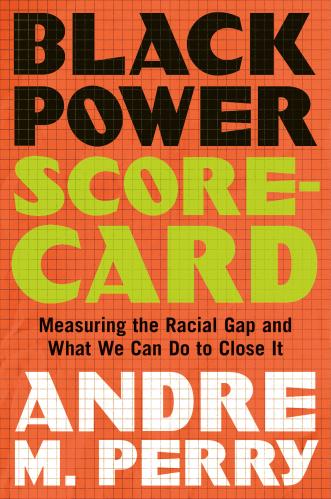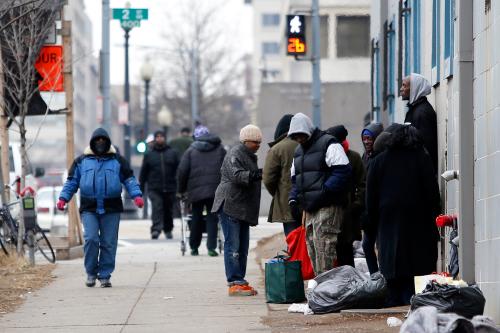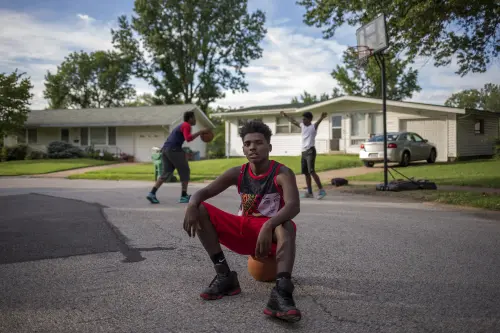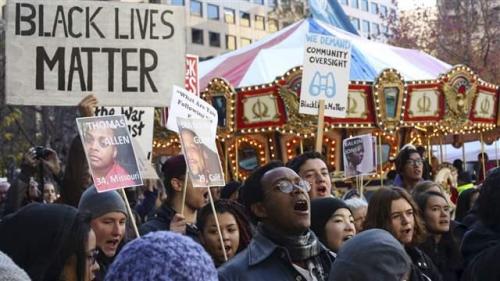It is hard to overstate the importance of the new study on intergenerational racial disparities by Raj Chetty and his colleagues at the Equality of Opportunity Project. Simply put, it will change the way we think the world works.
Making good use of big data—de-identified longitudinal data from the U.S. Census and the IRS covering nearly the entire U.S. population from 1989 to 2015—the Chetty team finds that while the economic differences between whites and Asians and whites and Hispanics are converging over time, black children have earnings disparities that persist across generations. These gaps are explained almost entirely by large gaps in employment rates and wages between black and white men, even after controlling for parental income.
Place matters
But the most surprising findings on the intergenerational gap between black and white men are found in their data on neighborhood effects. Chetty’s previous research clearly demonstrates that rates of intergenerational mobility hinge on where children grow up. So a focus on the neighborhood a child grows up in is justified. Therefore, in this new study, Chetty and his colleagues begin with the assumption that within metro areas, black and white children grow up in very different neighborhoods, which could account for their different outcomes. To test this hypothesis, they compare the outcomes of children living in the same neighborhoods. They find that “the vast majority of the black-white gap persists even among boys growing up in families with comparable incomes in the same neighborhood; differences in neighborhood quality explain at most 25% of the black-white gap.”
But we should take a pause here. Most social scientists working in this field would say that compelling results showing neighborhoods accounting for up to a quarter of the black-white gap are in fact pretty important. While not one of their headline findings, Chetty and his colleagues show that neighborhoods have causal effects on racial disparities.
Measuring barriers in black neighborhoods
The Chetty team has a range of proxies for neighborhood quality. But even with their rich datasets, they may not have been able to fully capture the structural conditions of black neighborhoods. As Robert Sampson and I argued in 1995, it is difficult or in some cases impossible to reproduce in white communities the structural circumstances under which many black Americans live, including the historical legacy of extended racial discrimination and segregation across generations.
Consider what cities like Chicago, Baltimore, Milwaukee, Philadelphia, Pittsburgh, St. Louis, Cleveland, and Detroit have in common: they include many poor black neighborhoods that have undergone significant depopulation since 1970. The most visible symbols of this depopulation are abandoned buildings and vacant lots. The fundamental cause of this depopulation was the end of the Great Migration—that is, the cessation of black migration from the South in the early 1970s—and, simultaneously, the gradual movement of higher-income blacks from inner-city neighborhoods to other parts of the metro area, which I discussed in my book The Truly Disadvantaged (1987/2012). The ranks of those who abandoned these neighborhoods were no longer being replaced by new black migrants from the South, nor were other ethnic and racial groups moving into many of these neighborhoods—hence the depopulation.
This urban depopulation makes it more difficult to sustain basic institutions or to achieve adequate levels of neighborhood social organization, factors that are also related to greater joblessness and higher crime rates. Very few urban white neighborhoods, even those with the same poverty rates as black neighborhoods, approximate these conditions.
Surprising to many, Chetty and his colleagues also find that the usual suspects such as education, marital status, and wealth explain very little of the intergenerational racial gap in income. They also infer that “ability” is not a factor, since while there is no significant gap in black male and black female test scores, there is a large gap in individual upward mobility rates.
Black fathers matter—a lot, but in a surprising way
What explains the limited upward mobility of black boys from certain neighborhoods? Perhaps the most striking finding of the whole report is the impact of “father presence” in census tracts on the mobility chances of black boys. Note that the researchers are not showing here the direct effect of a boy’s own father, or the marital status of his parents. This is about the broader presence of fathers in a given neighborhood. Note, too, that the finding relates specifically to fathers, not just men in general.
This is a wholly new and important finding. It is a highly specific, race-by-gender effect that provides direction for further empirical research and theoretical development on the causal mechanisms underlying these findings. Future work should include the investigation of whether the presence of black fathers in a census tract:
- reduces disciplinary problems;
- provides supervision, as well as direct mentoring support;
- generates more pro-social behavior and norms that lead to positive aspirations; and
- leads to changes in the way black boys are perceived and treated by peers.
It would also be useful to explore the role of father presence in the black inner-city neighborhoods of Chicago, Baltimore, Milwaukee, St. Louis, Philadelphia, Pittsburgh, Cleveland, and Detroit. These tend to be depopulated, as I previously discussed, in comparison with the inner-city black neighborhoods in places like New York, Boston, Los Angeles, and Washington, D.C. that tend to be more densely populated, not depopulated. My hypothesis is that the more densely populated neighborhoods in these latter cities will feature a greater number of fathers, partly due to the presence of a higher proportion of working married-couple families.
Black and white children in vastly different neighborhoods, still
The paper also shows that the black-white mobility gap tends to be relatively small in neighborhoods with low poverty rates (below 10 percent) and high rates of fathers present (more than half). This demonstrates that there are childhood environments that yield good outcomes for black males. The problem is that fewer than five percent of black children grow up in such environments. This is a startling finding, given the growing economic inequality in the black community.
This inequality can be seen in differences within racial categories in the Gini coefficient, a measure of income inequality that ranges from 0 (perfect equality) to 1 (maximum inequality). Although the absolute level of black income is well below that of whites, blacks nonetheless display the most intra-group income inequality, with a household Gini index of 0.50 in 2016, followed by whites and Hispanics at 0.47, and Asians at 0.46.
Indeed, one of the most significant changes in the past several decades is the remarkable gains in income among more affluent blacks. The percentage of black households with incomes of at least $75,000 more than doubled from 1975 to 2016, to 24 percent, adjusting for inflation. Those making $100,000 or more quadrupled to 15 percent. In contrast, white households saw a less impressive increase, from 13 to 31 percent. On the other hand, the percentage of black households with incomes below $15,000 only declined by six percentage points, to 20.6 percent, between 1975 and 2016.
Income inequality is related to income residential segregation, and a 2014 study by the sociologists Kendra Bischoff and Sean Reardon shows that income segregation in metropolitan areas with populations of more than 500,000 has grown rapidly in the last several years, especially among black families. Indeed, whereas black American families in 1970 recorded the lowest rates of income residential segregation, they now register the highest income segregation of all major racial and ethnic groups. The rising income segregation in the black community is driven by both the growth of affluent blacks and the deteriorating conditions of poor blacks.
Race, class, gender, place: all connected
On the one hand, then, race trumps class when the focus is on interracial differences in neighborhoods and neighborhood effects, as the research of Chetty and his colleagues so clearly demonstrates. But on the other hand, class trumps race when the focus in on changing intra-racial neighborhood differences, especially those within the black community. In each instance, it is the interaction between race and class that researchers and policymakers have to address, not a focus on one to the exclusion of the other.
The Brookings Institution is committed to quality, independence, and impact.
We are supported by a diverse array of funders. In line with our values and policies, each Brookings publication represents the sole views of its author(s).











Commentary
Don’t ignore class when addressing racial gaps in intergenerational mobility
April 12, 2018